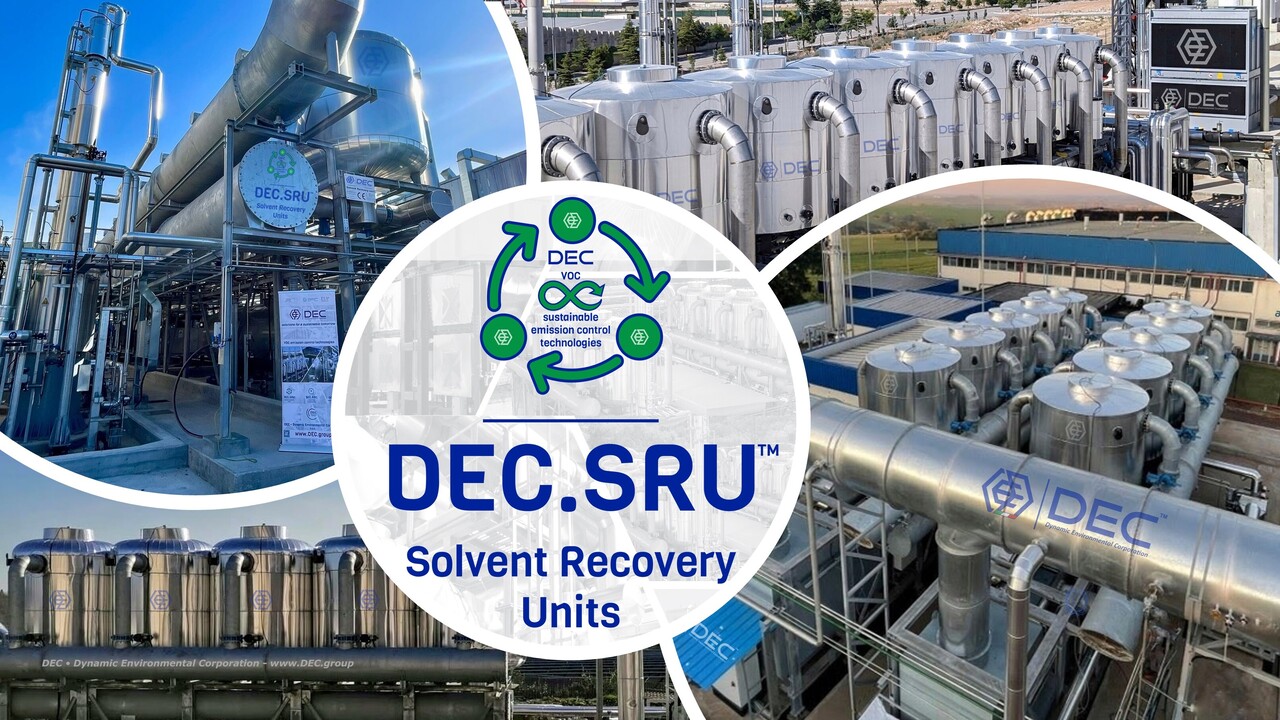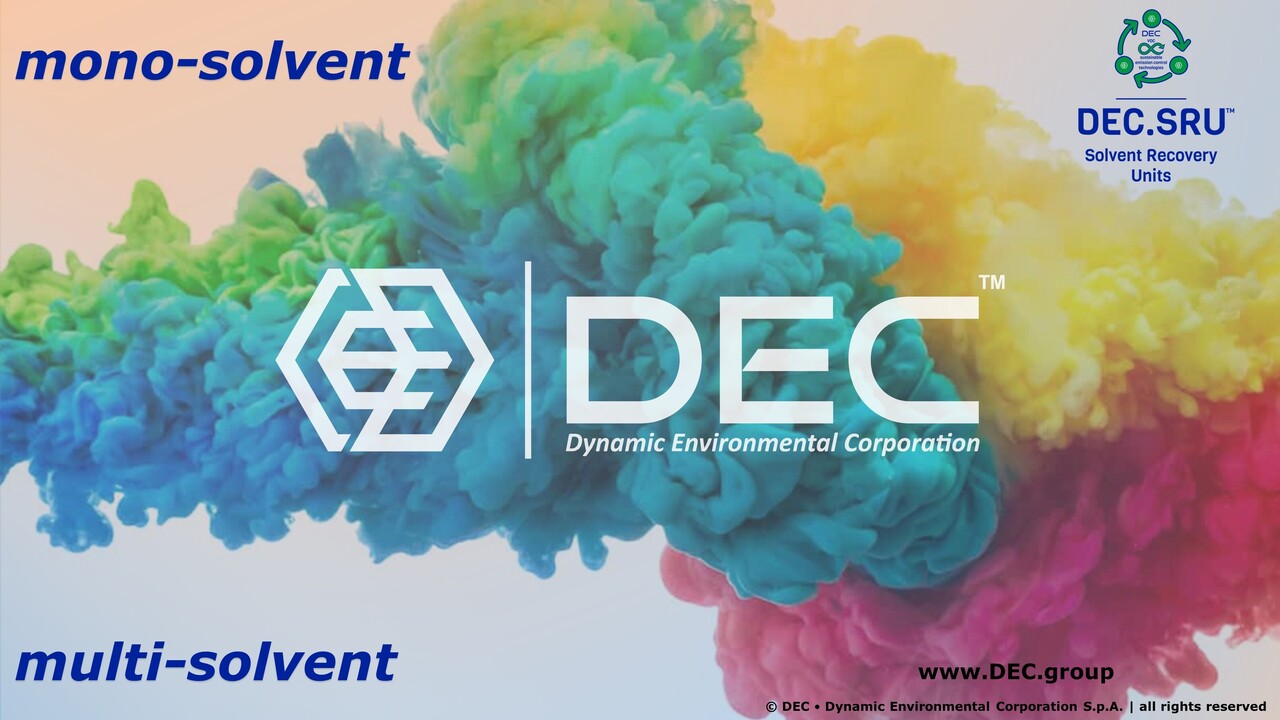
VOC Emission Control Technologies in converting industries
background
DEC.SRU™ Solvent Recovery Units offer a revolutionary alternative approach to solvent management in the converting industry. Unlike traditional oxidation methods that generate significant air pollution (GHGs), DEC's SRUs capture and rcoever solvents used in various printing and converting processes for direct re-use, promoting circular economy, sustainability and economic benefits.
This article explores the technical aspects of DEC.SRU™ Solvent Recovery Units, their compatibility with different inks and processes, and the challenges DEC faced in achieving wider adoption in certain regions.

Universal Appeal: SRUs handle both Mono-Solvent and Multi-Solvent inks
A key strength of DEC.SRU™ technology lies in its ability to effectively manage a wide range of adhesives, varnishes and inks, including both NC (nitrocellulose) and PU (polyurethane) based formulations:

This unmatched versatility makes DEC.SRU™ a highly adaptable solution for various converting applications, including:
SRU vs. RTO: why Your choice impacts more than just compliance
Despite their clear environmental and economic advantages, DEC.SRU™ systems haven't achieved widespread adoption in some regions, particularly northern Europe and the US: the continued reliance on DEC.RTO™ can be attributed to several historical challenges faced by DEC's SRUs:

DEC.SRU™: a Legacy of Innovation & Overcoming Challenges
DEC.SRU™ technology has undergone a remarkable transformation since its introduction: initially designed for specific mono-solvent applications, SRUs have evolved into a versatile solution for the converting industry.
A key limitation was the inability to handle multi-solvent inks: DEC addressed this challenge by introducing the DEC.RSG™ process, allowing SRUs to efficiently capture and separate blends of solvents (e.g. Acetates and Alcohols), known for forming binary or ternary azeotropic mixtures.
The DEC.SRU™ systems are a universal solution: no matter the location, climate, or weather conditions (e.g. environmental temperatures and/or humidity), the DEC process design ensures efficient and reliable solvent recovery, anywhere on the globe.
Furthermore, the footprint of SRUs has been significantly reduced with the introduction of the SMS-e series. This innovation makes SRU technology a more attractive option for a wider range of converting facilities with space constraints. These advancements position DEC's SRUs as a comprehensive and adaptable solution for sustainable solvent management in the converting industry.
A Sustainable future for Converting industries: SRUs vs RTOs
As environmental regulations tighten and the focus on sustainability intensifies, DEC's SRU technology is poised for significant growth. Here's a breakdown of the key differences between SRUs and RTOs:
Environmental Impact

Choose True Sustainability & Smarter Operations with DEC.SRU™
Selecting a VOC emission control technology that is appropriate for your specific needs and that will help you to comply with VOC emission regulations while minimizing the overall environmental impact (as VOCs and GHGs), avoiding any form of greenwashing. You have to consider different factors, including the type of VOCs being emitted (type of solvents used), the size of the facility (quantity of solvents used per year), the area available for the installation and the budget (CAPEX) constraints for the selected VOC abatement system.
However, even if all of the VOC Emission Control Technologies listed above are effective in complying with VOC regulations, only SRU, solvent recovery unit technology is aligning with both environmental compliance requirements and environmental responsibility. SRU, solvent recovery units offer a sustainable and efficient solution for DECarbonization and circular economy implementation. By capturing and reusing solvents that would otherwise be wasted, these VOC emission control systems not only reduce the environmental impact of the converting industries but also contribute to cost savings (ROI) and regulatory compliance. Compared to thermal oxidation systems, solvent recovery units demonstrate superior energy efficiency, reduced GHG emissions, versatility, and a commitment to long-term sustainability (reduced resource consumption). Embracing such innovative technologies is crucial for industries to meet their environmental goals, drive sustainability (economic growth and environmental stewardship), and pave the way for a greener future.
DEC.SRU™ technology offers a compelling solution for the converting industry. Its ability to handle both mono-solvent and multi-solvent inks, coupled with its environmental and economic advantages, positions DEC as the leader in sustainable solvent recovery. As existing RTOs reach their end-of-life and new environmental directives come into effect, companies are increasingly recognizing the benefits of SRUs. With their lower operating costs, minimized environmental impact, and focus on solvent reuse, DEC.SRU™ systems are paving the way for a greener future in the converting industry.
